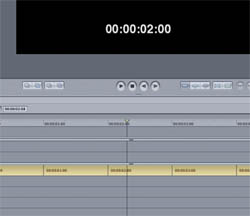Timecode is simply a way of recording a “time” along with either a visual or audio event. This allows you to say, “The beginning of the song is at 0 and the cymbal crash happened at 2 minutes and 53 seconds.”
The information is then stored along with the audio or video medium so that, as it is moved from device to device, the time information stays the same.
The most commonly used timecode format was developed by the Society of Motion Picture and Television Engineers.
Referred to as SMPTE (pronounced Simp-Tee), it was originally developed to synchronize sound for film but has since been adapted for video as well as audio-only use.
The other commonly used timecode format is Midi Time Code (MTC), which was developed by Chris Meyer and Evan Brooks for Digidesign (Avid).
How does synchronization work?
Imagine that you and a friend have the only two watches in the world, so that you have no time reference other than your own watches. You need to meet at an exact time later that day.
No watch is exactly accurate – maybe yours is a bit slow and your friend’s is a bit fast. Over the day the result is that there is a 10-second difference between your two watches.
While it may be okay with your friend that you’re 10 seconds late because he likes you, it would be very bad for a cymbal crash. In audio, even delays of a fraction of a second with doubled vocals can be noticeable.
The next day, in order to circumvent the 10-second time difference, you and your friend work out a system. You pick one person as the Master and one person as the Slave (it’s that kind of friendship).
The Master calls the Slave on his cell phone and tells him what time it is every few seconds, and the Slave resets his watch to match the Master’s. While this system may be an annoying prospect for human beings, it works quite well for machines.
Similarly, in every timecode set-up you must determine which machine is the master (there can be only one) and which are the slaves. Usually the constraints of the machine will define who is master and who is slave. For example, analog multitracks usually don’t function as slaves, because many cannot chase timecode.
How would I use Timecode?
I offer two scenarios for using timecode, an audio-only application, and a sync-to-video application.
1) Audio Only – SMPTE timecode is often used in an audio-only setting is to sync-mix automation or sequenced keyboard parts to an analog multitrack deck. At some point before mixdown, the tape is “striped” with SMPTE.
This means that timecode is recorded as an audio signal on one of the tracks on the tape. Usually an outer track is preferred to reduce the possibility of cross-talk. Many devices provide the ability to stripe with timecode, typically through a phono-out that can be patched into the mixing deck. (Some examples of such devices are the MOTU MicroExpress and the Emagic Unitor8.)













